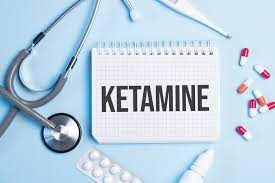A comprehensive medical detox is always an indicator of effective addiction treatment. Addiction is a multifaceted illness requiring specialized care across several levels, an adaptive approach, and a focus on the patient’s requirements to achieve lasting recovery. Detox is an important first step, but it’s only the beginning of a process that can improve a person’s health in every aspect: physically, mentally, spiritually, and socially. We will look at some of the most commonly used drugs in a medical detox setting.
Most Commonly Used Drugs in Medical Detox
- Methadone
Many opioid drugs, including heroin, are short-acting agonists. Patients in medical detox can maintain brain receptor engagement with far lower doses of an opioid if a longer-acting opioid, such as methadone, is administered. Patients who are dependent on heroin or other opioids may benefit much from daily methadone dosages. Methadone is an opioid drug, meaning it may be misused and should only be administered under medical supervision. Methadone effectively reduces uncomfortable opioid withdrawal symptoms if administered in a medically supervised detox program.
The medicine disulfiram is often used in the medical detox process for alcoholics. Disulfiram, like acamprosate, reduces the probability of relapse. Alcohol use while taking disulfiram causes an unpleasant response owing to acetaldehyde accumulation in the body. Vision loss, difficulty breathing, chest discomfort, nausea, vomiting, and headache, are all possible physical effects.
- Buprenorphine
Buprenorphine functions as a partial opioid agonist. It has less potential for misuse since, unlike methadone, it does not completely activate brain receptors. Consistent buprenorphine dosing helps mitigate heroin withdrawal symptoms and cravings. The Food and Drug Administration (FDA) expressly authorized buprenorphine to treat opioid dependence, making it a Schedule III prohibited medication. Patients undergoing medical detox may be prescribed buprenorphine, albeit it is often administered in tandem with naloxone. For instance, buprenorphine and naloxone are included in the combination drug Suboxone.
- Acamprosate
Acamprosate, like other medical detox drugs, lessens the physical impact of withdrawal symptoms when used daily. It is often used to help patients with alcohol use disorders in keeping their brain chemistry stable. Acamprosate prevents the overexcitation of brain regions during alcohol withdrawal. The system’s excitatory and inhibitory signaling pathways are severely disrupted as a result. It lessens the chances of relapsing and increases the chances of remaining sober.
- Naltrexone
Naltrexone is effective in the treatment of both opiate and alcohol dependence. It’s a great option for MAT since it’s simple to administer and has little negative effects or potential for misuse. Patients should ideally get naltrexone dosages after going through a standard medical detox and are drug-free for at least seven days. Using opioids while still present in the body may cause significant withdrawal symptoms. Patients may take naltrexone orally once daily or monthly through an injectable version known as Vivitrol.
Experience The Safest Detox Program in Houston
Are you in need of a medical detox but unsure where to start? Those in need of detox and medical stabilization in Houston can turn to Skyward Treatment Center for the most cutting-edge medical, psychiatric, and therapeutic treatment today. Besides, we are committed to doing everything it takes to help you or your loved one locate a suitable detox, rehabilitation, treatment facility, or service provider if we aren’t the right match. Please get in touch with Skyward Treatment Center if you or somebody you know is struggling with substance abuse or dual diagnosis.




